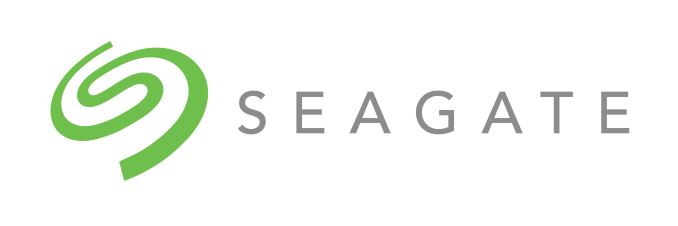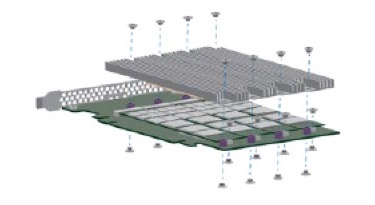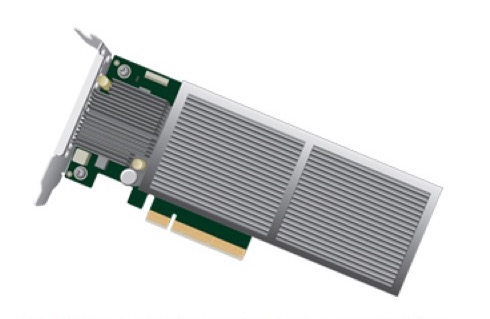Seagate Announces PCIe x16 SSD Capable Of 10GB/s
by Billy Tallis on March 9, 2016 6:00 AM EST- Posted in
- SSDs
- Storage
- Seagate
- Open Compute
- Enterprise SSDs
- NVMe

At the Open Compute Project Summit this week in San Jose, Seagate will show off a pair of upcoming enterprise NVMe SSDs with impressive throughput specifications. The drives will have PCIe x16 and x8 interfaces and provide maximum throughput of 10GB/s and 6.7GB/s respectively. Seagate has provided few details so far, but it's safe to say those numbers are peak sequential read speeds.
The big question is what controllers are used in these drives. Most NVMe SSD controllers support at most 4 PCIe lanes, with the notable exceptions being PMC-Sierra's 8-lane controllers. Seagate does have an internal development team with SandForce, but it's highly unlikely they've been able to develop such a large controller so soon. And these new Seagate SSDs are probably not based on unannounced third-party controllers.
This means the 16-lane SSD from Seagate is almost certainly a multi-controller solution with an on-board PCIe switch, which is now common for top of the line enterprise PCIe SSDs. A 10GB/s read speed suggests that the 16-lane drive is most likely based on four of Seagate's Nytro XM1440 M.2 SSDs, which advertise 2.5GB/s read speed for capacities of at least 800GB and use a Marvell controller. Seagate's blog shows CAD renderings that seem consistent with a layout of four Nytro XM1440 M.2 drives on one card, but the requisite PCIe switch chip isn't shown. (EDIT: Photographs of the board have surfaced showing that it does passively route the PCIe lanes from the x16 connector to the M.2 slots without a PCIe switch chip. This may prevent all four drives from being used on platforms like Intel's Xeon E3 where the 16 PCIe lanes can only be divided into x8+x8 or x8+x4+x4 configurations.)
Seagate claims that the 10GB/s speed of the 16-lane drive is 4GB/s faster than any competing drive. If Seagate's new drive is a single-controller solution then that's a fair comparison and an impressive accomplishment, but there are already multi-drive products on the market offering RAID0 speeds well in excess of 6GB/s. HP's Z Turbo Drive Quad Pro is a PCIe x16 card that provides connectivity and cooling for up to four M.2 PCIe SSDs. When ordered as part of a workstation it can be configured with four Samsung SM951 SSDs to provide an advertised 9GB/s sequential read speed, though when sold separately it only comes populated with two M.2 SSDs.
Meanwhile the 8-lane drive is probably not based on two 4-lane controllers, despite it being the most obvious solution. Most products based on a single controller from Intel, Samsung, Marvell or Phison with a PCIe 3.0 x4 link advertise maximum read speeds of 2.2–2.8GB/s, so providing 6.7GB/s from just two controllers would require 20% higher performance than any PCIe 3.0 x4 NVMe controller has attained. Instead, the PCIe x8 SSD Seagate is announcing is probably another four Marvell controller design that is limited in sequential speeds by the overhead of the drive's PCIe switch and the upstream PCIe link. The 1M IOPS claimed for the 8-lane drive is slightly higher than four times the rating for a single XM1440, but some capacities of the 2.5" XF1440 offer enough IOPS. The thermal constraints of the M.2 form factor compared to 2.5" drives and add-in cards with large heatsinks account for the discrepancy in IOPS rating. According to Seagate the 8-lane drive will offer some cost and power savings over the 16-lane drive, and it's not hard to imagine that it could also allow servers to a larger total capacity for the same number of PCIe lanes.
Seagate's blog shows a rendering of the 8-lane card with the same heatsink layout as their Nytro XP series flash accelerator cards that use a RAID of SandForce SATA controllers to provide up to 4GB/s sequential read speeds. There's a good chance this is just a placeholder illustration, as Seagate says the 8-lane drive is still being finalized.
Both drives are intended for the Open Compute Project (OCP) hardware ecosystem founded by Facebook and now also supported by a variety of major companies in cloud computing, telecom, networking, and finance. The Open Compute Project focuses on datacenter hardware and infrastructure, with members contributing specifications and designs that are more detailed than industry standards like the ATX form factor. Seagate says their new drives will comply with OCP specifications, but the specific standards haven't been identified. Potentially relevant standards include a specification for thermal monitoring of PCIe add-in cards and a specification for M.2 SSDs that sets standards for things like minimum performance, the conditions under which thermal throttling is permitted, maximum power consumption and mandatory eDrive encryption support.
Based on the assumption that both drives are rougly equivalent to four Nytro XM1440 drives plus a PCIe switch chip, peak power consumption will probably be at least 29W for the 8-lane drive and could be nearly 40W for the 16-lane drive.
Seagate describes the PCIe x16 drive as production-ready but the 8-lane drive is still being finalized. Samples of each have been made available to Seagate's customers and the full product launch is planned for summer of 2016. Capacities have not been announced but are likely to start at 3.2TB or 3.84TB for the highest-performing models.
Source: Seagate












30 Comments
View All Comments
MTEK - Wednesday, March 9, 2016 - link
Anyone know which CPU/Chipset will support PCIe 4.0?DanNeely - Wednesday, March 9, 2016 - link
As of last summer the ETA for the spec to be done was early next year. That means this years Zen and Kabbylake systems almost certainly won't be getting it. Cannonlake is a maybe, but since it'll be Intel's first 10nm part they might not want to take any extra risk in ticking the PCIe controller on the CPU too.http://www.eetimes.com/document.asp?doc_id=1326922
Pork@III - Wednesday, March 9, 2016 - link
First PCI-E 4 I/O come in 300 series motherboards with support of Intel Cannonlake series processors in late 2017.ikjadoon - Wednesday, March 9, 2016 - link
They just barely ratified PCIe 3.1 in December; PCIe 4.0 (some analysts say) might be in 2017, so Zen + Kaby Lake will definitely miss it.Samus - Wednesday, March 9, 2016 - link
I wouldn't say that. I have a client with a few Z420 workstations, all equipped with a Z Turbo drive. These machines are simply for Solidworks and the resulting video rendering/editing. They just ordered two Z440's with the new Z Turbo Quad, just ridiculously fast (4GB/sec) so there is a market for this in the mainstream. These are only $2500 machines and most of the cost is the Quadro, not the PCIe SSD's. By comparison, a Macintosh Pro costs much more with SKU's up to $8,000. That, however, is obviously not mainstream. Anything under $2500 I still consider consumer/prosumer level.But I agree, the "need" for something like this in everyday computing simply doesn't exist, but that doesn't mean it can't be mainstream and available at MicroCenter...
boeush - Wednesday, March 9, 2016 - link
Well, Intel's upcoming Kaby Lake is supposedly a mild update of Skylake, so probably no luck there. Maybe the 10 nm Cannonlake, which is at least a year and a half away? Doubtful, as it's mostly just a die shrink of Skylake rather than a new architecture. So maybe the fabled Ice Lake, the next 'Tock' - and probably due no sooner than mid-2018 (optimistically speaking)...Meanwhile, AMD is about to unleash it's Zen - a design that's by now a couple of years old - and unlikely to have anticipated the PCIe lane crunch. As to whether AMD will survive long enough to produce Zen's successor, is at this point an open question...
extide - Wednesday, March 9, 2016 - link
Don't forget we got PCIe 3.0 on Ivy Bridge, which was "just a shrink" of Sandy. So Cannonlake is not out of the question.DanNeely - Wednesday, March 9, 2016 - link
The rumor mill says Intel's 200 series chipsets will be getting another 4 high speed IO lanes, and since the max supported number of USB3 and Sata6 ports isn't changing it's clear the intent is to add more PCIe capacity. OTOH the chipset's still limied to grouping in a max of x4 (because that's all it has to the CPU). It's possible we might see more CPU lanes with Ice Lake (next new architecture); but since the overwelming majority of their customers won't have a dGPU 16 CPU lanes are probably still good enough for mainstream parts; and if that pushes more enthusiasts to LGA2011 products instead of LGA115x, from Intel's standpoint that's a good thing.boeush - Thursday, March 10, 2016 - link
Of course, by Ice Lake (mid- to late-2018? early 2019?) we should have PCIe4 in wide adoption. If typical I/O device bandwidth capability doesn't double by then, the extra PCIe bandwidth could be used to stuff more devices in over the same number of lanes (so, e.g. putting a device on a x2 link where before it would have needed a x4.)And not to nitpick, but LGA2011 would be somewhat long in the tooth by then (and likely replaced with something else) - but your point regarding premium/enterprise vs consumer chipsets remains valid.
deadlockedworld - Wednesday, March 9, 2016 - link
But it is from Seagate, so I automatically assume it will break after 1.5 years.